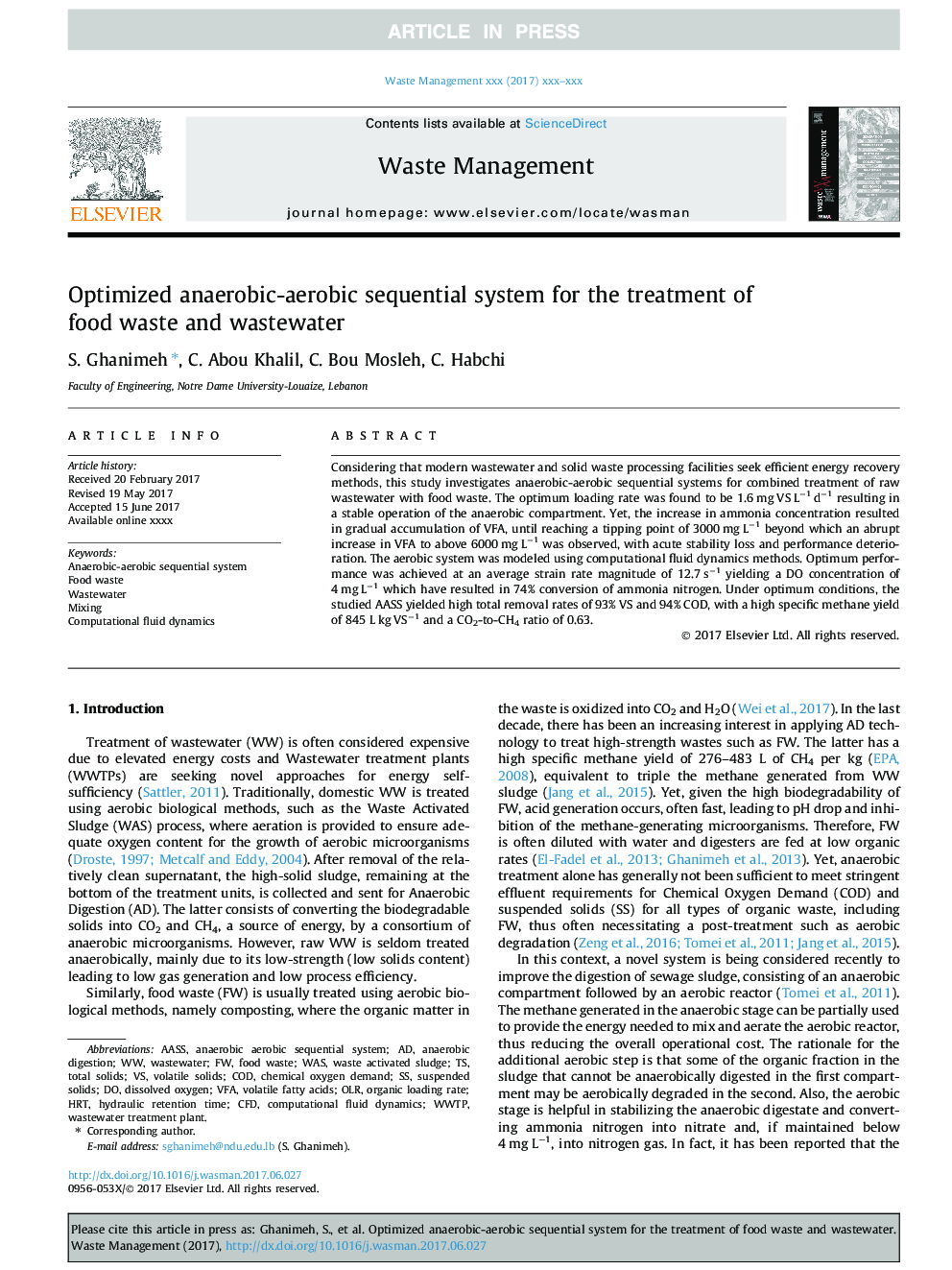| کد مقاله | کد نشریه | سال انتشار | مقاله انگلیسی | نسخه تمام متن |
|---|---|---|---|---|
| 8870387 | 1622615 | 2018 | 8 صفحه PDF | دانلود رایگان |
عنوان انگلیسی مقاله ISI
Optimized anaerobic-aerobic sequential system for the treatment of food waste and wastewater
ترجمه فارسی عنوان
سیستم ترجیحی بی هوازی بی هوازی برای درمان زباله های فاضلاب و فاضلاب بهینه شده
دانلود مقاله + سفارش ترجمه
دانلود مقاله ISI انگلیسی
رایگان برای ایرانیان
کلمات کلیدی
VFAAASSWWTPOLRHRTVolatile fatty acids - اسیدهای چرب فرارdissolved oxygen - اکسیژن محلولWAS - بودWastewater treatment plant - تصفیه خانه فاضلاب chemical oxygen demand - تقاضای اکسیژن شیمیاییTotal solids - جامدات جامدvolatile solids - جامدات فرارSuspended solids - جامدات معلقCFD - دینامیک سیالاتComputational fluid dynamics - دینامیک سیالات محاسباتیFood waste - زباله های مواد غذاییhydraulic retention time - زمان هیدرولیکیWastewater - فاضلاب یا پسابWaste activated sludge - لجن فعال زبالهMixing - مخلوط کردنOrganic loading rate - نرخ بارگیری آلیAnaerobic digestion - هضم بیهوازیCod - کادو
موضوعات مرتبط
مهندسی و علوم پایه
علوم زمین و سیارات
مهندسی ژئوتکنیک و زمین شناسی مهندسی
چکیده انگلیسی
Considering that modern wastewater and solid waste processing facilities seek efficient energy recovery methods, this study investigates anaerobic-aerobic sequential systems for combined treatment of raw wastewater with food waste. The optimum loading rate was found to be 1.6 mg VS Lâ1 dâ1 resulting in a stable operation of the anaerobic compartment. Yet, the increase in ammonia concentration resulted in gradual accumulation of VFA, until reaching a tipping point of 3000 mg Lâ1 beyond which an abrupt increase in VFA to above 6000 mg Lâ1 was observed, with acute stability loss and performance deterioration. The aerobic system was modeled using computational fluid dynamics methods. Optimum performance was achieved at an average strain rate magnitude of 12.7 sâ1 yielding a DO concentration of 4 mg Lâ1 which have resulted in 74% conversion of ammonia nitrogen. Under optimum conditions, the studied AASS yielded high total removal rates of 93% VS and 94% COD, with a high specific methane yield of 845 L kg VSâ1 and a CO2-to-CH4 ratio of 0.63.
ناشر
Database: Elsevier - ScienceDirect (ساینس دایرکت)
Journal: Waste Management - Volume 71, January 2018, Pages 767-774
Journal: Waste Management - Volume 71, January 2018, Pages 767-774
نویسندگان
S. Ghanimeh, C. Abou Khalil, C. Bou Mosleh, C. Habchi,
